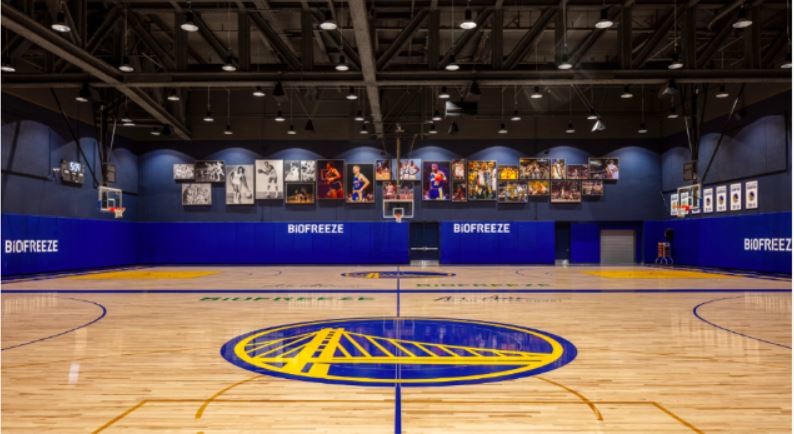
Merging of Sports & Healthcare at Performance and Training Facilities
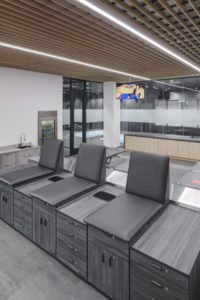 It’s no secret that professional athletics is a booming business. The average worth of the 50 most valuable teams is $3.4 billion (as of May 2021). The top three teams — the Dallas Cowboys, New York Yankees, and New York Nicks — are each valued at more than $5 billion! As the value of professional sports teams continues to rise, there has been an increased emphasis on the well-being of the teams’ most valuable assets — their players. Over the past decade, we’ve seen a drastic transformation in the amount of funding, planning, and amenities that are going into training and performance facilities across all professional leagues — NFL, NBA, MLB, NHL, and MLS. These venues have evolved into much more than simply a place to practice, they’re addressing nutritional needs, strength and performance, recovery and injury prevention, medical treatment, and game planning for the athletes. The belief is that there is a strong benefit to keeping the complete care of players in house, allowing the team to provide a consistent level of care, streamline wellness with comprehensive care, and closely monitor development and recovery.
It’s no secret that professional athletics is a booming business. The average worth of the 50 most valuable teams is $3.4 billion (as of May 2021). The top three teams — the Dallas Cowboys, New York Yankees, and New York Nicks — are each valued at more than $5 billion! As the value of professional sports teams continues to rise, there has been an increased emphasis on the well-being of the teams’ most valuable assets — their players. Over the past decade, we’ve seen a drastic transformation in the amount of funding, planning, and amenities that are going into training and performance facilities across all professional leagues — NFL, NBA, MLB, NHL, and MLS. These venues have evolved into much more than simply a place to practice, they’re addressing nutritional needs, strength and performance, recovery and injury prevention, medical treatment, and game planning for the athletes. The belief is that there is a strong benefit to keeping the complete care of players in house, allowing the team to provide a consistent level of care, streamline wellness with comprehensive care, and closely monitor development and recovery.
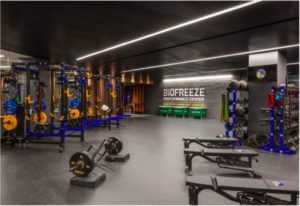 Over the past decade, our sports team has provided services to numerous performance and training facilities. While all leagues are looking to provide the best for their athletes, we’ve noticed a continued emerging theme to bring together sports and healthcare into a single location across them all. At the cutting edge, NFL and NBA performance facilities have led the evolution. Their facilities have become increasingly more complex, with added wellness areas for athlete’s mental health, in addition to the more traditional physical health spaces such as practice courts/fields, training and weight rooms, hydrotherapy, and x-ray and exam rooms. In many cases, these performance and training facilities are located off-site from their home stadium or arena. Although exceptions to this do exist, such as the performance complex SSR recently designed as part of the new Chase Center arena for the Golden State Warriors.
Over the past decade, our sports team has provided services to numerous performance and training facilities. While all leagues are looking to provide the best for their athletes, we’ve noticed a continued emerging theme to bring together sports and healthcare into a single location across them all. At the cutting edge, NFL and NBA performance facilities have led the evolution. Their facilities have become increasingly more complex, with added wellness areas for athlete’s mental health, in addition to the more traditional physical health spaces such as practice courts/fields, training and weight rooms, hydrotherapy, and x-ray and exam rooms. In many cases, these performance and training facilities are located off-site from their home stadium or arena. Although exceptions to this do exist, such as the performance complex SSR recently designed as part of the new Chase Center arena for the Golden State Warriors.
The MLB is unique from other leagues in that their primary performance facilities are typically not located in their home cities but instead at their Spring Training locations in mostly Florida (Grapefruit League) or Arizona (Cactus League). The centralization of these complexes allows for the teams to compete in these exhibition leagues in the off-season while escaping the cold. Dedicated spaces within these complexes for both mental and physical health of their athletes has become the norm.
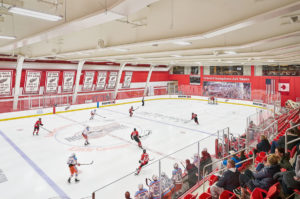
A frequent trend SSR has seen with NHL franchises is to partner with local minor league, collegiate teams, and/or communities to build multi-purpose venues that serve a multitude of needs for their performance facilities. Unique spaces are often included for the athletes such as dental exam rooms to provide the athletes quick access to these services.
MLS performance facilities have also become more and more complex as the league has grown tremendously in the past decade. SSR is currently helping to design Nashville Soccer Club’s new practice facility, which will include three exterior fields, 35,000k SF of space for player wellness, training, and conditioning, as well as an additional 10,000 SF as part of a partnership with Vanderbilt University Medical Center to provide healthcare to the public.
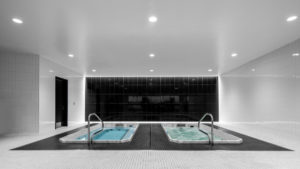 Overall, from the design perspective, these venues are becoming more complex with specialized systems requiring forethought in the design of the systems necessary to serve these evolving spaces. Having contributed to many of these projects, our sports team is well experienced in meeting the needs to these increasingly complex facilities. An additional benefit of the SSR team is our national healthcare expertise to aid our sports team in the design of these facilities, as the combination of healthcare and sports continuously becomes intertwined in these new buildings. As a sports fan and former athlete, it’s encouraging to see teams take a proactive approach to caring for the whole athlete, not just their physical wellbeing.
Overall, from the design perspective, these venues are becoming more complex with specialized systems requiring forethought in the design of the systems necessary to serve these evolving spaces. Having contributed to many of these projects, our sports team is well experienced in meeting the needs to these increasingly complex facilities. An additional benefit of the SSR team is our national healthcare expertise to aid our sports team in the design of these facilities, as the combination of healthcare and sports continuously becomes intertwined in these new buildings. As a sports fan and former athlete, it’s encouraging to see teams take a proactive approach to caring for the whole athlete, not just their physical wellbeing.








